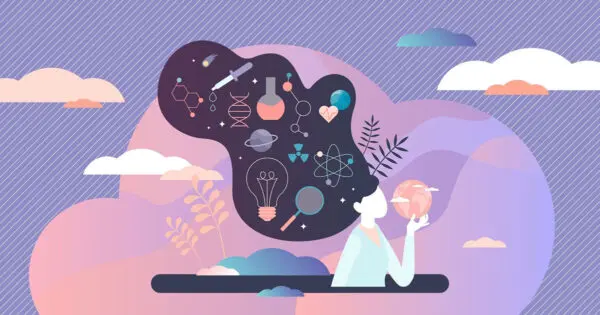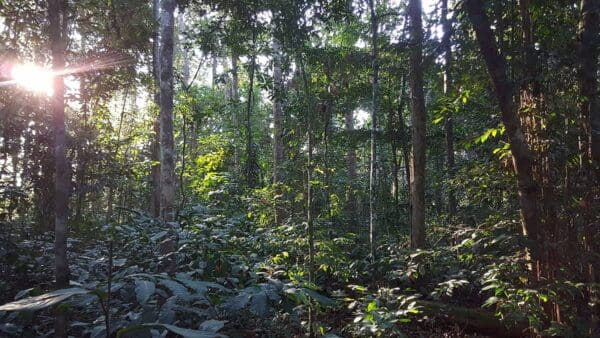Ibogaine, a naturally occurring psychoactive indole alkaloid from the root bark of Tabernanthe iboga, is well known for its ability to eliminate opiate withdrawal symptoms and to reduce drug-seeking behavior in animal trials and observational studies on humans. And while psychedelics like psilocybin, LSD, and MDMA are generally more widely regarded for their psychotherapeutic benefits, ibogaine has also been used to augment and improve the efficacy of psychotherapy models.
Because of the impacts of prohibition and the lack of funding for clinical research trials, most of what we know about the psychological impacts of ibogaine comes from conferences organized by advocates to educate people about ibogaine, anecdotal stories, and the medical subculture that has long supported ibogaine research. But, that story is quickly changing.
Before we dive into why people use ibogaine today, let’s briefly review some of the early histories of ibogaine and psychotherapy. To learn more about iboga, the plant traditionally used in the Bwiti ceremony, be sure to check out our Beginner’s Guide to Ibogaine here.
Ibogaine and Psychotherapy
In the world of psychotherapy and ibogaine research, Claudio Naranjo is arguably one of the most central figures, not just to ibogaine therapy but in psychedelic therapy more broadly. Naranjo led the earliest and most important ibogaine therapy studies, and later went onto help develop The Enneagram Theory of Personality, which is frequently utilized by psychedelic-assisted therapists today.
Claudio Naranjo’s Ibogaine Research Impacts
At a 1966 LSD Conference held at the University of California in San Francisco, Chilean-born Naranjo presented several case studies from his ibogaine treatment practice. Naranjo was familiar with other psychedelic plants, and had studied ayahuasca during the 1960s, later going on to work with MDA and MDMA. According to Naranjo, “therapy with ibogaine is most suited to the exploration of the past, in contrast with MDMA, which is most adequate for the clarification of the present.”
Here, Naranjo begins outlining his ibogaine treatment protocols for psychiatry, reporting on the tendency for memories in the distant past to come up during the sessions. Additionally, Naranjo reported on the frequent dancing and embodied movements that emerged in his patients, who found that movement allowed them to make meaning of their personal experiences. He used Gestalt therapy sessions with his clients before his ibogaine treatment sessions, which featured music, a comfortable couch as well as plenty of open space if the patient felt the urge to move or dance.
For Naranjo, ibogaine was ideally suited for working through childhood issues. He used Gestalt therapy methodology for his ibogaine treatment protocols with his patients in Mexico and Brazil. With the implementation of the Controlled Substances Act in 1970, ibogaine research was impossible in the United States. Meanwhile, Naranjo’s work was deeply impacted by the sudden death of his son that same year. After the tragedy, Naranjo undertook a pilgrimage with a small group of students to dive deep into a personality theory called protoanalysis, an analytical process unique to the Arica School, which included an integrative approach to healing, consciousness, and physiology.
In 1971, Naranjo founded the Seekers After Truth Institute to educate and facilitate this “psycho-spiritual journey of human development,” in which embodied self-expression is a primary component. Naranjo was instrumental to the Esalen Institute’s growth in California during the early days of the Psychedelic Renaissance. His work on developing The Enneagram theory of Personality continues to have ripple effects throughout psychotherapy, business management, and educational theory. For the solo seeker, The Enneagram is an ideal place to start exploring the psycho-spiritual impacts of ibogaine, and other psychedelic experiences.
Strangely, Naranjo died in 2019, the same year as two other prominent psychedelic elders, Ralph Metzner and Ram Dass, who worked with Tim Leary on the Harvard Psilocybin Project. Naranjo was integral to the emergence of the psychedelic movement and culture in the United States and worldwide. Throughout the course of his life, Naranjo would help train MAPS therapists for an MDMA study in 2000 in Spain and work with Alexander “Sasha” Shulgin on the use of MDA and MDMA in psychotherapy.
The Therapeutic Ibogaine Experience
According to many people in the ibogaine community, individuals seek out ibogaine for many reasons. People communicate in forums about the benefits that extend past healing drug use behavior and withdrawal symptoms and often talk about the long-term benefits and sense of well-being they received from their experience. According to one study, about one-third of ibogaine treatments are not related to treating substance use disorders.
Substance use disorder often has comorbidity with PTSD and other psychiatric diagnoses. In fact, according to multiple studies, about half of the people who experience substance use disorder also experience other mental health disorders and vice versa. It is reasonable to assume that some of the people who seek out ibogaine treatment for substance use are also dealing with other diagnoses. And yet, follow-up studies have pointed out that depression, OCD, and anxiety were significantly reduced across the board.
One of the most common themes in substance use research and ibogaine is that participants say they gained deep insight into their lives and situations that led them to ibogaine. As an ibogaine visionary experience is different for everyone, anecdotal reports — even in controlled settings —– are all we have. However, we can look for overall themes and mental health outcomes to determine estimated efficacy and what mental health disorders might be warranted for further research.
People Use Ibogaine for Visioning
The therapeutic value of ibogaine visions was outlined in Naranjo’s protocol, and many traditional Bwiti practitioners and initiates utilize the ibogaine visions catalyzed by iboga to support psychospiritual engagement as well.
In a report that looked at the effects of ibogaine and why it might be therapeutic, many people described closed-eye visuals, and some people admitted the images were too fast or confusing to grasp. However, some common themes emerged:
- Convening with ancestors
- Evolution of life and the planet
- Apocalyptic scenes and injustices over time, such as the mistreatment of marginalized groups of people
- Creative ideas, connecting ideas and themes, deepened critical thinking, and improvement in cognitive abilities insight
Some people describe replaying memories and being able to watch them with detached personal emotions or from other perspectives aside from their own. A further study revealed anecdotes from participants mentioning that they were given astute psychological insight into the reasons they sought out treatment or were able to reprocess traumatic memories.
In 2018, a paper was published that looked at the healing potential of ibogaine. It specifically looked at the importance of the ibogaine visionary state and if necessary for successful treatment. While the author determined that the dream-like state was akin to a healing journey, it was imperative that the experience was integrated into the participant’s life in a positive and therapeutic way.
People Report Lasting Mental Health Benefits From Ibogaine Experiences
Ibogaine is classified as an oneirogen, meaning it produces a “dream-like” state, differing from traditional hallucinogens. EEGs performed during ibogaine sessions have shown a similar state to rapid-eye-movement (REM), which may partly explain the waking dream state people describe. Some research suggests that this state may produce neuroplasticity which would allow for the reconsolidation of learning as well as the formation of new associations. Indeed, traditional REM has been associated with reprocessing memories as well as consolidated learning.
The insights ibogaine participants may receive during its characteristic dream-like state is reflected in research where many people who seek out ibogaine treatment mention that they are given insight into the intentions and reasons that prompted them to seek treatment in the first place.
In a couple of long-term analysis reports on people who were treated with ibogaine for opiate use, nearly all participants experienced higher levels of self-acceptance, less self-critical thoughts, and attained a different perspective on their lives afterward. An increased ability to tolerate challenging emotions and situations along with reduced anger was also observed.
Researchers who have studied the effects of the oneiric state during ibogaine and how people feel afterward have noted that many people are able to relive past experiences in life, learn how to regulate emotions, and may be able to reevaluate past trauma from a different perspective.
In an observational study on U.S. Special Forces Veterans who sought out ibogaine for PTSD, 84% of participants said the ibogaine dream-like experience was among the top 5 most meaningful experiences of their life. Over half to about two-thirds of participants reported a positive change in their sense of life’s meaning and purpose, a deeper connection with nature, a more positive attitude about themselves, as well as better relationships and social connections.
Ibogaine Study Participants Report Positive Impacts 12 Months Post-Treatment
In a follow-up analysis of a study on ibogaine and substance abuse in Brazil, followed by 30 days of psychotherapy, researchers interviewed participants to get an idea of long-term efficacy and the connection to long-term well-being. Some participants made it clear that the ibogaine experience was hard to integrate and the psychotherapy follow-up made a huge difference in their experience.
Participants reported that they felt like they were able to achieve years worth of psychological insight in a single ibogaine experience. Some reported seeing memories relating to family, childhood memories that shaped who they became as adults, or perceived failures or actions made within their family, these memories helped with healing and also understanding the dynamics of their family from a different perspective. Other benefits mentioned included cognitive improvement, an overall sense of well-being, and a renewed interest in activities and hobbies.
A separate long-term efficacy study that surveyed ibogaine treatment for substance abuse disorders, not limited to solely opiates, also documented that depression, OCD, and anxiety were reduced across the board.
Ibogaine’s Medical Subculture and DIY Detox
Despite legality issues with ibogaine, Alper’s paper on the “The Ibogaine Medical Subculture” estimated that at the time of writing, 68% of people who sought out ibogaine treatment sought out treatment for substance abuse, and 53% of that total were opioid-dependent. People were going to seek a way to stop their suffering with or without clinical trials and legality.
Alper’s “Ibogaine Medical Subculture” described several scenes that make up the ibogaine community, aside from the Bwiti in Gabon and their ceremony practice: medical model, lay provider/treatment guide, activist/self-help, and religious/spiritual.
These “scenes” described anything from; a physician who works out of a hospital setting overseas; clinics in another country with a provider who is not a physician and may run a retreat-like setup alone or with a staff; activists and advocates who raise awareness about ibogaine, organize conferences for providers to speak at, and promote harm reduction principles; and people who have been initiated in Gabon who come back to the west to perform ritual ceremonies with iboga extracts.
There is a lot of room for interpretation within these “scenes”. For example, a lay provider could be a sitter who gives someone ibogaine in a hotel room and leaves after 24 hours, or it could be someone with ten years of experience and a full medical staff, but operates a retreat out of a house. As it stands today, ibogaine providers exist on the frontlines of industry and anecdotal research. They have to make changes to their practice as the world changes to meet the needs of their diverse clientele while keeping people safe in an unregulated industry.
Ibogaine treatment providers hope that with consistent anecdotal research and experience, the methodology will improve for better practices and knowledge will pass onto the world of academia, where scientific research and trials may be applied.
Anecdotal Self-Reports of Ibogaine Use
As part of the medical subculture, the internet has played a crucial role in disseminating ibogaine treatment protocols among providers — and among people managing their own health needs. Between underground clinics and international retreat centers, many providers and advocates are themselves a repository of their clients’ stories, hopes, and goals.
One person reported: “After the hell of the bad trip, I was beyond relaxed for like a year. I didn’t quit smoking (damn), but I completely lost my taste for caffeine, sugar, and processed foods. Which wasn’t what I expected at all.”
A popular repository of psychedelic trip reports, Erowid details dozens of personal experiences of using ibogaine, ranging from drug detox to introspection to mystical or spiritual purposes. Mainstream media now reports on experiences of people who sought ibogaine treatment, such as one man who said he sought out ibogaine because he “was ready to die anyways. So [he’d] rather take this chance and be able to live a normal life than not take this chance and die a horrible death.” The ibogaine subreddit has committed itself to safe practice and advice, as well as a safe place to discuss ibogaine and ask questions.
Other stories reveal veterans seeking ibogaine not only for support with substances but also PTSD related to combat trauma and concussive disorders. One man’s partner commented upon picking him back up at the airport that she immediately noticed “his anger and his darkness and his whole demeanor had changed. [After ibogaine] all of that was gone. He was easy. He was light. He was present. He was happy. It just absolutely blew my mind.”
Another patient even reported using ibogaine for treating symptoms of Parkinson’s Disease, saying that his movements, once ratcheted and painful, were now smooth, and he was able to stand up, walk in a straight path, and turn around in a few steps — something he had been unable to do even when using Parkinson’s medications.
A Final Thought on Why People Use Ibogaine
Above all, people seek out ibogaine because of the fundamental human right to health and spiritual experience. It seems a curious thing that so much therapeutic potential is possible, but that oversight and oversteps can prevent people in the United States from seeking out proven, albeit risky, medicine for their own purpose.
Ibogaine centers are usually located in countries where ibogaine is “unscheduled”, putting the existence of such centers in a legal grey area. It can be hard to vet the integrity of the provider’s perspective, which is why absolute care, time, and due diligence should always be taken when selecting an ibogaine treatment center.
Traveling abroad for ibogaine treatment, however, is expensive and outside the means of most people. The future of ibogaine treatment is uncertain in the United States, but it seems that the medical subculture may yet help ensure that treatment is accessible to all.








